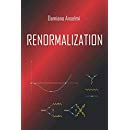Batalin-Vilkovisky formalism
Quantum gravity is extended to include purely virtual “cloud sectors”, which allow us to define a complete set of point-dependent observables, including a gauge invariant metric and gauge invariant matter fields, and calculate their off-shell correlation functions perturbatively. The ordinary on-shell correlation functions and the $S$ matrix elements are unaffected. Each extra sector is made of a cloud field, its anticommuting partner, a “cloud-fixing” function and a cloud Faddeev-Popov determinant. The additional fields are purely virtual, to ensure that no ghosts propagate. The extension is unitary. In particular, the off-shell, diagrammatic version of the optical theorem holds. The one-loop two-point functions of dressed scalars, vectors and gravitons are calculated. Their absorptive parts are positive, cloud independent and gauge independent, while they are unphysical if non purely virtual clouds are used. We illustrate the differences between our approach to the problem of finding a complete set of observables in quantum gravity and other approaches available in the literature.
Eur. Phys. J. C 83 (2023) 1066 | DOI: 10.1140/epjc/s10052-023-12220-4
We extend quantum field theory by including purely virtual “cloud” sectors, to define physical off-shell correlation functions of gauge invariant quark and gluon fields, without affecting the $S$ matrix amplitudes. The extension is made of certain cloud bosons, plus their anticommuting partners. Both are quantized as purely virtual, to ensure that they do not propagate ghosts. The extended theory is renormalizable and unitary. In particular, the off-shell, diagrammatic version of the optical theorem holds. We calculate the one-loop two-point functions of dressed quarks and gluons, and show that their absorptive parts are gauge independent, cloud independent and positive (while they are generically unphysical if the cloud sectors are not purely virtual). A gauge/cloud duality simplifies the computations and shows that the gauge choice is just a particular cloud. It is possible to dress every field insertion with a different cloud. We compare the purely virtual extension to previous approaches to similar problems.
Eur. Phys. J. C 83 (2023) 544 | DOI: 10.1140/epjc/s10052-023-11717-2
We study some properties of the canonical transformations in classical mechanics and quantum field theory and give a number of practical formulas concerning their generating functions. First, we give a diagrammatic formula for the perturbative expansion of the composition law around the identity map. Then, we propose a standard way to express the generating function of a canonical transformation by means of a certain “componential” map, which obeys the Baker-Campbell-Hausdorff formula. We derive the diagrammatic interpretation of the componential map, work out its relation with the solution of the Hamilton-Jacobi equation and derive its time-ordered version. Finally, we generalize the results to the Batalin-Vilkovisky formalism, where the conjugate variables may have both bosonic and fermionic statistics, and describe applications to quantum field theory.
Eur. Phys. J. C 76 (2016) 49 | DOI: 10.1140/epjc/s10052-015-3874-y
We investigate the background field method with the Batalin-Vilkovisky formalism, to generalize known results, study parametric completeness and achieve a better understanding of several properties. In particular, we study renormalization and gauge dependence to all orders. Switching between the background field approach and the usual approach by means of canonical transformations, we prove parametric completeness without making use of cohomological theorems, namely show that if the starting classical action is sufficiently general all divergences can be subtracted by means of parameter redefinitions and canonical transformations. Our approach applies to renormalizable and non-renormalizable theories that are manifestly free of gauge anomalies and satisfy the following assumptions: the gauge algebra is irreducible and closes off shell, the gauge transformations are linear functions of the fields, and closure is field-independent. Yang-Mills theories and quantum gravity in arbitrary dimensions are included, as well as effective and higher-derivative versions of them, but several other theories, such as supergravity, are left out.
Phys. Rev. D 89 (2014) 045004 | DOI: 10.1103/PhysRevD.89.045004
Let $S(\Phi,U,K,K_{U})$ denote the solution of the master equation $(S,S)=0$, where $\{\Phi ^{A},U\}$ are the fields and $\{K_{A},K_{U}\}$ are the sources coupled to the $\Phi ^{A}$- and $U$-gauge transformations. If we replace $U$ with the solution $U^{*}(\Phi ,K,K_{U})$ of the $U$-field equations
\begin{equation}
\frac{\delta _{r}S}{\delta U}=0,
\end{equation}
then the action
\begin{equation}
S^{*}(\Phi ,K,K_{U})=S(\Phi ,U^{*}(\Phi ,K,K_{U}),K,K_{U})
\end{equation}
satisfies the master equation $(S^{*},S^{*})=0$ in the reduced set of fields and sources $\Phi,K$.

 Quantum Gravity
Quantum Gravity 


